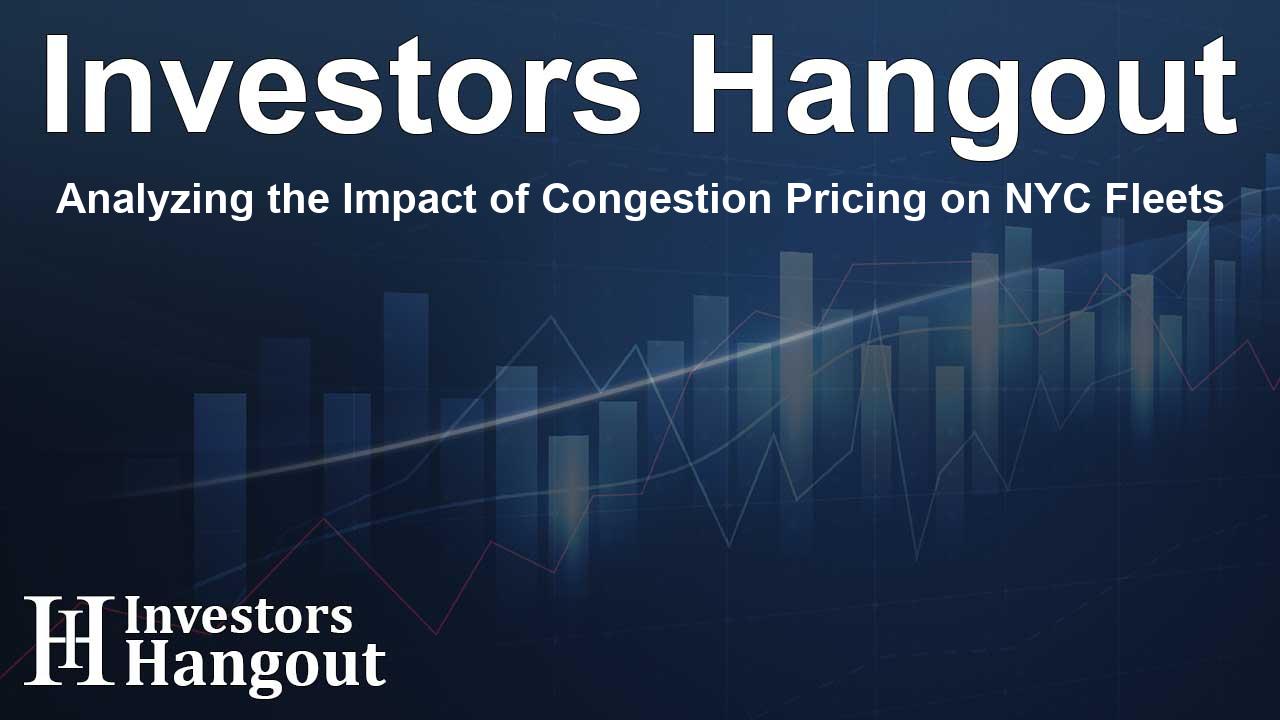Analyzing the Impact of Congestion Pricing on NYC Fleets

Understanding the Influence of Congestion Pricing on NYC Fleets
In a pivotal study utilizing data from over 16,000 vehicle trips, Altitude by Geotab has provided insights into the effects of New York City's congestion pricing (CP) program on commercial fleets operating in Lower Manhattan. This groundbreaking analysis marks a significant step as it highlights the first comprehensive examination of freight movement in the bustling heart of NYC.
Overview of the Congestion Pricing Initiative
The congestion pricing program, designed to tackle the persistent issue of gridlock in Lower Manhattan, was implemented in early 2025. While the focus of early reports primarily revolved around passenger vehicles, Altitude by Geotab's analysis appeals to the commercial sector, revealing how such policies impact vital supply chains and last-mile delivery logistics.
Key Insights from the Study
During the comparison of commercial fleet activity from January to May in 2024 and 2025, several noteworthy findings emerged:
Improved Travel Times for Trucks
One of the most significant outcomes of the analysis was the improvement in travel times for commercial vehicles. Between 8 a.m. and 6 p.m., 44% of the roadways in Lower Manhattan experienced faster movement for these vehicles, while 40% remained unchanged.
A Shift in Vehicle Composition
Furthermore, the study observed a marked decline in the number of larger trucks—specifically medium- and heavy-duty vehicles—entering the newly established congestion zone. In contrast, there was an increase in the use of multi-purpose vehicles, which may be more suitable for navigating the city's tight confines.
Little Change in Idling Time
Despite the improvements in traffic flow, the analysis clarified that overall idling behavior of vehicles within the congestion pricing area did not experience significant changes. This suggests that while traffic conditions may have improved, the time spent idling remains consistent.
Expert Commentary on Data Insights
Nate Veeh, AVP of Business Development at Altitude by Geotab, emphasizes the importance of utilizing data insights to understand transportation dynamics. He articulates, "This study exemplifies how insights into traffic congestion and toll implementations can inform on effectiveness concerning traffic flow, vehicle types, and idling times." This expert perspective underlines the need for municipal planners to leverage data for better decision-making, aiming for safety and efficiency enhancements in urban mobility.
The Future of Urban Mobility and Data Analysis
As urban centers like New York adopt innovative policies aimed at transforming mobility, ongoing data analysis becomes imperative to understand complex interactions among vehicle types, traffic trends, and operational behaviors. Altitude by Geotab's findings reinforce the value of detailed freight mobility data, which can shape effective transportation solutions crucial for the evolving landscape of city logistics.
Company Information
About Altitude by Geotab
Altitude by Geotab is recognized as a leading provider of advanced mobility solutions across North America. With headquarters in Oakville, Ontario, the company excels in its data analytics capabilities, helping both the public and commercial sectors enhance their understanding of transportation dynamics. Their commitment to delivering dependable insights ensures improved planning and outcomes, all while maintaining the utmost respect for data privacy.
About Geotab
As a global leader in connected vehicle solutions, Geotab empowers organizations to maximize fleet efficiency through innovative data analytics and technology. With a strong focus on transforming fleet safety and sustainability, Geotab processes billions of data points each day and serves a diverse client base, including Fortune 500 companies and government fleets.
Frequently Asked Questions
What is the aim of the NYC congestion pricing program?
The program is designed to alleviate traffic congestion in Lower Manhattan by charging fees for vehicle entry during peak hours.
How does congestion pricing affect commercial fleets?
The study indicates improved travel times for many commercial vehicles, alongside shifts in the types of vehicles used.
Is there a change in idling time after congestion pricing implementation?
According to the analysis, the idling behavior of vehicles within the congestion area has largely remained unchanged.
What types of vehicles have increased their presence in Lower Manhattan?
The study noted an increase in multi-purpose vehicles that are more suitable for navigating the congestion zone.
Why is data analysis crucial for transportation planning?
Data insights are essential for understanding traffic patterns and vehicle behaviors, allowing city planners to make informed decisions for urban mobility improvements.
About The Author
Contact Dylan Bailey privately here. Or send an email with ATTN: Dylan Bailey as the subject to contact@investorshangout.com.
About Investors Hangout
Investors Hangout is a leading online stock forum for financial discussion and learning, offering a wide range of free tools and resources. It draws in traders of all levels, who exchange market knowledge, investigate trading tactics, and keep an eye on industry developments in real time. Featuring financial articles, stock message boards, quotes, charts, company profiles, and live news updates. Through cooperative learning and a wealth of informational resources, it helps users from novices creating their first portfolios to experts honing their techniques. Join Investors Hangout today: https://investorshangout.com/
The content of this article is based on factual, publicly available information and does not represent legal, financial, or investment advice. Investors Hangout does not offer financial advice, and the author is not a licensed financial advisor. Consult a qualified advisor before making any financial or investment decisions based on this article. This article should not be considered advice to purchase, sell, or hold any securities or other investments. If any of the material provided here is inaccurate, please contact us for corrections.
